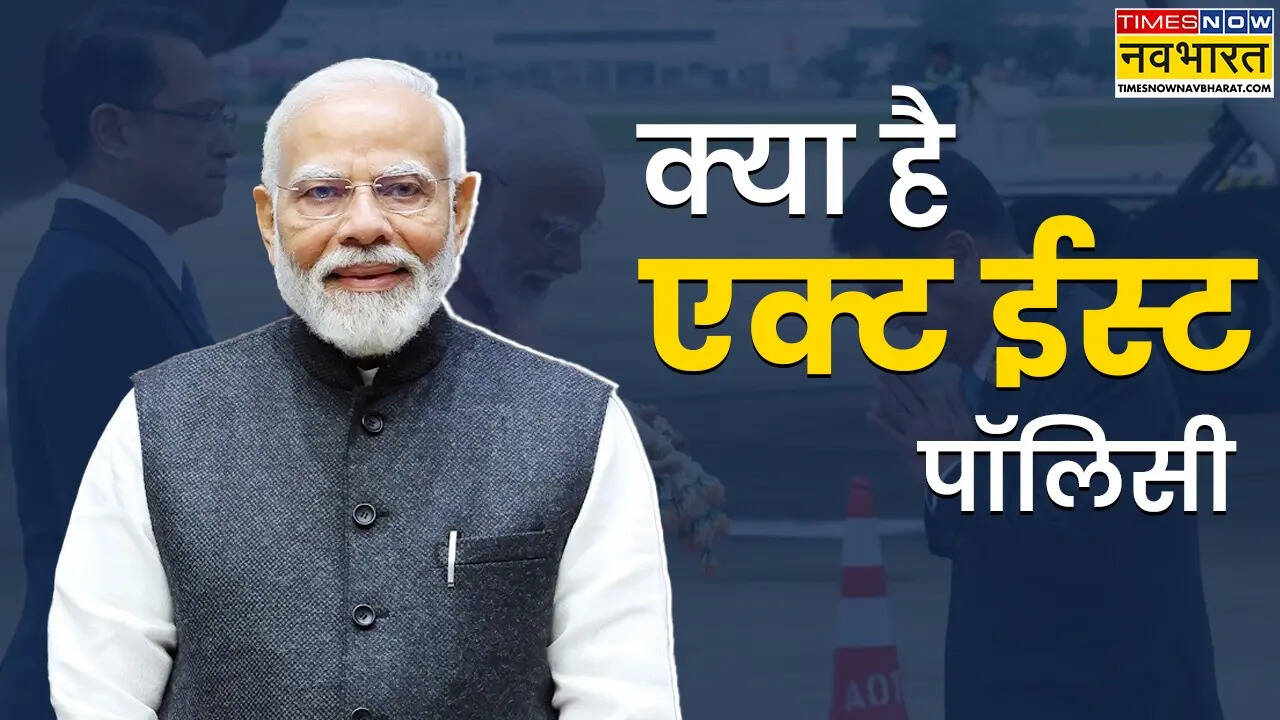The ACT Eastern Policy is explained at 10 points


What is the Eastern Policy
Eastern Policy Act: Prime Minister Modi’s law seems to change the basis of international politics. India’s relations with East Asia and Southeast Asia have been further strengthened as Prime Minister Narendra Modi has officially accepted Prime Minister Narendra Modi. The purpose is to promote India to increase connectivity to other countries of Asia and strengthen business, security and cultural relations. Under this policy, India has made many important efforts in its energy, infrastructure, trade and regional security cooperation. An important part of this strategy is “evaluation and participation” in which India’s focus is not only on bilateral relations but also in regional and multi -faceted cooperation.
Where are the roots attached to the ACT Eastern policy
The roots of this policy are in the ‘Luke East Policy’ which was launched in 1992, and the main focus was on economic relations with the Southeast Asia region. However, in 2014, Prime Minister Modi converted the ‘Luke East Policy’ as’ East AEP). This change of Prime Minister Modi was not only a symbol, but also a symbol of an important strategic approach. Extreme diplomatic merger, strong trade joint, excellent security cooperation and cultural exchange with its Southeast Asia and a broad Hind-Pacific region.
Act in a view of the Eastern Policy
- Prime Minister Modi’s ‘Luke East Policy’ has brought the color of India’s trade with ASEAN almost doubled. In 2016-17, it increased from $ 71 billion to $ 130 billion in 2024. Today, India is the 7th largest business partner in Asian, while ASEAN is India’s fourth largest business partner.
- To enhance the economic connection, the Modi government has raised the India-Asian trade and movement on the highway to promote infrastructure projects such as Indo-Myanmar-toland.
- There was significant improvement in direct flight connection, India has now been directly connected to many ASEAN countries, leading to trade, tourism and cultural exchange.
- The strategic and safety dimension of the ‘ACT Eastern Policy’ was another important hub. India is actively involved in maritime security cooperation, especially the Philippines and Vietnam. The Philippines, one of the largest miles of stones under this policy, is the sale of Brahmos missiles, which refers to the entry region of India as a serious security supplier in the region. In addition, India signed military logistics agreements with Vietnam, expanding its presence in the Indo-Pacific Security Framework.
- Launched in 2019, the ‘Indo-Pacific Ocean Trend (IPOI) is a major step in the region to ensure sea stability and shipping freedom in the region. In 2023, India and Asian conducted their first joint maritime exercises, aimed at fighting security challenges in the South China Sea and extensive Indo-Pacific.
- In addition to trade and security, the mutual communication between cultural and people played an important role in strengthening India’s relationship with Southeast Asia. Prime Minister Modi’s law renewed India’s shared Buddhist heritage with Myanmar, Thailand, Laos, Vietnam and Indonesia and developed deep spiritual relations.
- Over 300 ASEAN students received scholarships at Nalanda University. The Modi government provided educational and cultural alternative facilities to strengthen relations.
- In the last 10 years, the ‘Act East Policy’ has established India as an active and influential player in Southeast Asia. Although the ‘Luke East Policy’ is mainly focused on business, the AEP expanded a multi -dimensional strategy, including diplomacy, security, communication and culture.
- Prime Minister Modi’s frequent meetings, high-level summit conferences and strategic alliance have not only strengthened India’s presence in the Indo-Pacific region, but also played the role of a leader on regional issues.
Modi’s view
Prime Minister Modi has made many trips to many countries to strengthen relations. These include three trips to Singapore (2015, 2018, 2024) and three trips to Indonesia (2018, 2022, 2023). In 2017, Prime Minister Modi became the first Prime Minister to visit the Philippines in 36 years. His historical visit to Brunei in 2024 was the first visit to the country to an Indian prime minister, becoming a symbol of India’s emerging diplomatic approach. In addition, he traveled to Myanmar, Malaysia, Thailand, Laos and Vietnam, which led to the strategic and economic agenda of India in the region. In 2018, the ASEAN-India Conversation Corporation was the chief guest of all ASEAN leaders on the 25-year ASEAN Republic Day. Modi called.
Country and the world’s latest news (There is no message) Read more in Hindi, all the big messages Times now Navbarath Live TV But. Experiences (Explanation Messages) Updates and elections (Elections) The Times is now related to the latest news.

